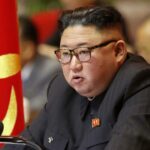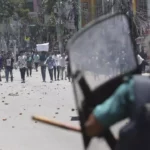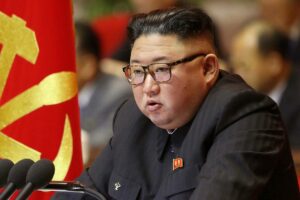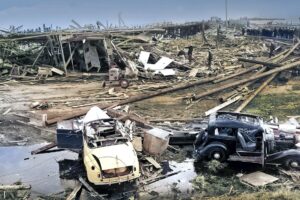Brussels, Frankfurt (26/2 – 50)
Central Asia stretches from the Caspian Sea in the west to China and Mongolia in the east and from Afghanistan and Iran in the south to Russia in the north. It includes the former Soviet republics of Kazakhstan, Kyrgyzstan, Tajikistan, Turkmenistan, and Uzbekistan. The region has a rich cultural history, with many of the countries having deep ties to Russian and Soviet culture. It is home to some of the world’s oldest civilizations, including those in Afghanistan, Tajikistan and Uzbekistan. The region also boasts a variety of languages, religions and ethnicities which have shaped its distinct identity.
Central Asia is an important area for energy resources such as oil and gas reserves. Its strategic location between Europe, Russia and China, make it an attractive destination for foreign investment. However, despite these opportunities there are still challenges facing the region such as corruption and weak governance structures that hinder economic development. Additionally, environmental degradation due to climate change is becoming increasingly problematic in Central Asia as well.
Kyrgyzstan was hailed in the 1990s as the future Switzerland of Central Asia, yet the country has proven to be unstable and poor. The Asian Development Bank estimates that about 26 percent of Kyrgyzstanis live below the poverty line. Ethnic violence in the city of Osh in 2010 left deep scars on the country. Kyrgyzstan also struggles with rampant corruption.
Tajikistan is the poorest country in Central Asia as World Bank data revealed that almost a third of Tajikistan’s population lives below the poverty line. Ethnic violence occurred when twenty-five ethnic Pamiris were killed by security forces in protests on May 2022. For years, President Emomali Rahmon diverted attention from his regime’s economic mismanagement and violence against a minority group by highlighting his legacy as the leader who brought stability to the nation after its civil war.
Nearby Turkmenistan is struggling after the government decided to cut subsidies in 2019 for basic goods and utilities. The government of President Gurbanguli Berdymukhamedov also has struggled to secure its borders with Afghanistan, where both the Taliban and the Islamic State have increased their presence.
Meanwhile, in Uzbekistan, President Shavkat Mirziyoyev acknowledges the need for economic reforms. Former President Islam Karimov’s egregious human rights violations and his family’s notorious corruption isolated Uzbekistan from global investors. Mirziyoyev’s government has taken some initial steps to liberalize the country and open up its economy to the outside world. However, they have been only symbolic and the government lacks the capacity and resources to institute broader reforms.
In contrast, Kazakhstan does have the capacity to reform: it is the region’s economic powerhouse due to its enormous natural resources, abundant hydrocarbon reserves, mineral wealth, and vast agricultural resources. Kazakhstan is the richest country in Central Asia and borders important and powerful countries such as China and Russia.
Kazakhstan is implementing a large-scale project titled “New Silk Road” that envisions the revival of the country’s historical role as the major bridge between the two continents. It is also planned to transform the country into the largest business and transit hub of the region.
Nursultan Nazarbayev, who was elected president five times, voluntarily stepped down on March 2019 after almost 30 years in power. Kassym-Jomart Tokayev, speaker of the upper house of parliament and a Nazarbayev loyalist, took over as the country’s acting leader.
On June 2019 Kazakhstan held a presidential election where Kassym-Jomart Tokayev captured 70 percent of the vote. Tokayev showed himself to be a responsible, far-sighted, modernizing leader. Nazarbayev handed over the chairmanship of the ruling party Nur Otan to Tokayev in 2021. This process is democratic and a peaceful transition of power to younger generations of Kazakhstan’s leaders.
Despite a long journey of democracy which was filled with blood in bloody January, Kazakhstan quickly rose and reformed its government and society to stay as Central Asia’s richest country. The country experienced intense riots and revolts in January 2022, namely due to an increase in fuel prices, which added to an overall discontent with the government and very high-income inequalities. The January bloodshed left more than 230 people dead and prompted authorities to call in troops from a Russia-led security bloc.
The tragic event led to President Tokayev proposing a series of reforms aimed at building what he has termed as ‘New Kazakhstan’. He built on hopes and promises of democratic reforms, including the strengthening of the Parliament and the establishment of a Constitutional Court.
“We have shown that we are united in building the new Kazakhstan. We must review the legislation which allowed a small group of people to concentrate the country’s economic resources in their hands and enjoy the preferential status,” Tokayev said after being reelected on November 2022.
He proposed delivering better governance by investing tremendous resources in educating and training a cadre of highly qualified technocrats and professionals. Kazakhstan has largely withstood the effects of the January turmoil and the regional geopolitical tensions.
Other Central Asian countries also have their sensitive domestic problems and are affected by Russia’s war on Ukraine and the exchange of sanctions between Russia and other G20 nations. Kyrgyzstan, Tajikistan, Turkmenistan, and Uzbekistan should follow ‘New Kazakhstan’, the example of a peaceful transition to balanced democracy. They will own better governance, may utilize all their potential resources, and in turn, can reduce poverty.















